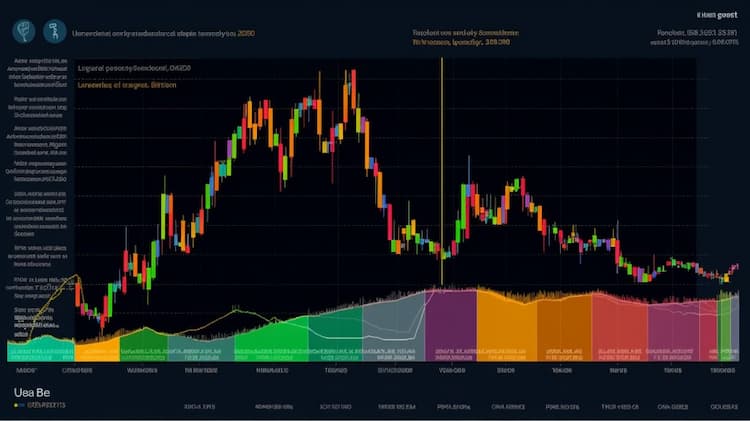DIA ISSUER
The SPDR Dow Jones Industrial Average ETF (DIA) is a prominent fund managed by State Street Global Advisors. Launched in January 1998, DIA seeks to replicate the performance of the Dow Jones Industrial Average (DJIA), one of the most iconic and longstanding stock indices in the U.S. The DJIA, often referred to as ""The Dow,"" consists of 30 blue-chip U.S. companies across various sectors. Given the historical significance of the DJIA as a barometer of the U.S. stock market, DIA provides investors with an opportunity to gain exposure to this select group of leading companies. As one of the earliest U.S.-focused ETFs, DIA has played a pivotal role in offering investors access to the broader U.S. equity market and has contributed to the growing popularity of ETF investments in general.
DIA DIVIDEND
The SPDR Dow Jones Industrial Average ETF (DIA), managed by State Street Global Advisors, offers investors exposure to 30 iconic blue-chip U.S. companies and also provides periodic dividend distributions based on the dividends paid by the Dow's constituents. To be eligible for these dividends, investors must be holders of the DIA ETF by the close of business on the declared record date, typically having purchased shares before the ex-dividend date. DIA generally distributes dividends monthly, with the amount determined by the combined dividends from the index's companies, subtracting the fund's expenses. The dividend yield can vary due to the performance and policies of the underlying companies, changes in the DJIA composition, and the ETF's internal expenses. While aiming to pass on income from its holdings to shareholders, the exact amount and frequency of DIA's dividends can fluctuate. Additionally, these dividends are subject to taxation, with specifics varying by individual circumstances and jurisdiction. Thus, DIA not only offers equity exposure but also potential dividend income for its investors.
DIA TRACKING
The SPDR Dow Jones Industrial Average ETF (DIA) is designed to closely track the performance of the Dow Jones Industrial Average (DJIA), one of the U.S.'s most recognized stock indices. This ETF employs a passive investment strategy, aiming to replicate the DJIA's returns by holding a portfolio of stocks that mirror those within the index. As with all ETFs, there's a possibility of tracking error, which is the difference between the ETF's performance and that of its underlying index. Tracking error can arise due to factors such as fund expenses, dividend timing, and changes in the composition of the DJIA. However, DIA has historically demonstrated a tight tracking relationship with the DJIA, making it a popular choice for investors seeking exposure to the broad U.S. equity market represented by the 30 blue-chip companies of the Dow.
DIA CORRELATION
The SPDR Dow Jones Industrial Average ETF (DIA) serves as a reflection of the Dow Jones Industrial Average (DJIA), encompassing 30 significant blue-chip U.S. companies. Its performance is often used as a barometer for the broader U.S. equity market. Due to this, DIA's movements are correlated with other major U.S. stock indices, such as the S&P 500 and the NASDAQ Composite. However, the degree of correlation can vary over time based on market conditions, sectoral biases, and macroeconomic factors. While DIA predominantly reflects the U.S. market, global events can also influence its trajectory, leading to correlations with major international indices. It's crucial for investors to understand these correlations as they can provide insights into diversification opportunities and potential market movements, especially when constructing a diversified portfolio.
DIA SECTOR
The SPDR Dow Jones Industrial Average ETF (DIA) is a representation of the Dow Jones Industrial Average (DJIA), which consists of 30 leading blue-chip U.S. companies spanning various sectors. The DJIA's composition provides a snapshot of the American economy, encompassing a broad range of industries from technology and finance to healthcare and consumer goods. The weightage of each sector within DIA can shift over time based on the changing dynamics of the economy, market valuations, and the entry or exit of companies from the DJIA. As a result, the sectoral distribution within DIA offers investors insights into the prevailing trends and health of key industries in the U.S. economy. Monitoring these sector weightings can help investors gauge sector-specific risks, opportunities, and the potential impact of economic policies or global events on different industries.
DIA EXPOSURE
The SPDR Dow Jones Industrial Average ETF (DIA) provides investors with direct exposure to the Dow Jones Industrial Average (DJIA), encompassing 30 dominant blue-chip companies in the U.S. By investing in DIA, one effectively gains a stake in a diversified set of industries and sectors that the DJIA represents, from technology and finance to healthcare and consumer staples. This exposure allows investors to tap into the performance and growth potential of these leading firms without having to invest in each company individually. Furthermore, DIA's composition offers a reflection of the broader U.S. economy's health and trends. For investors seeking a balanced mix of risk and return while capturing the essence of American corporate performance, DIA serves as a convenient and efficient vehicle to achieve that exposure.



